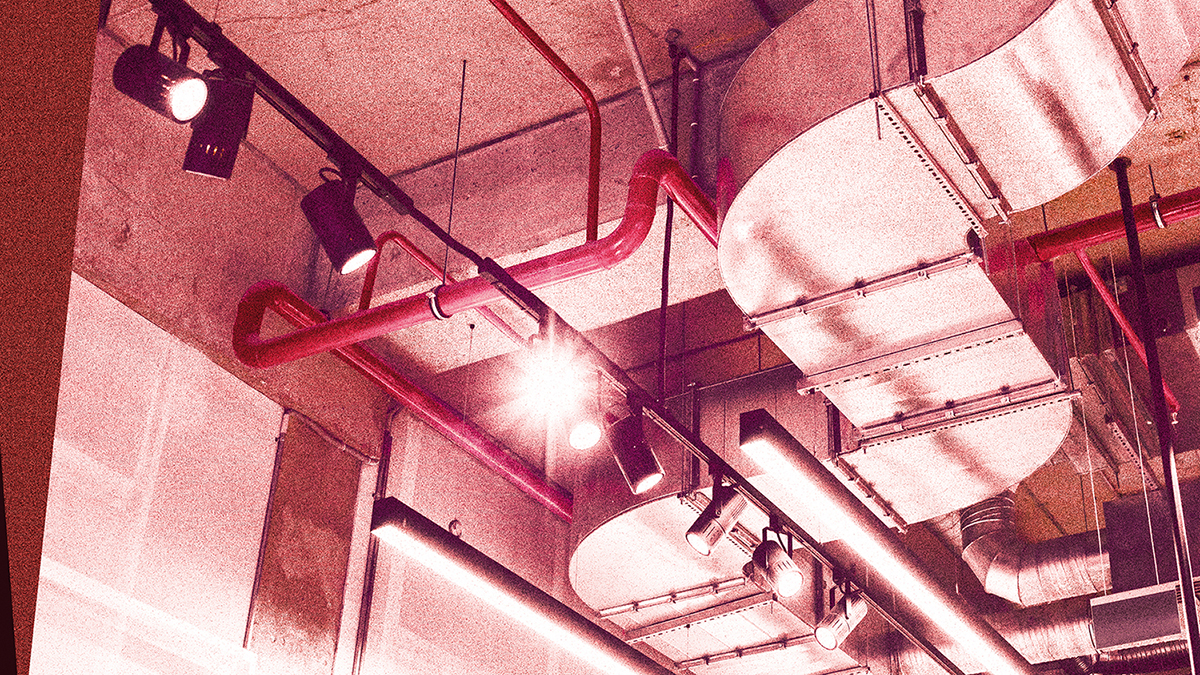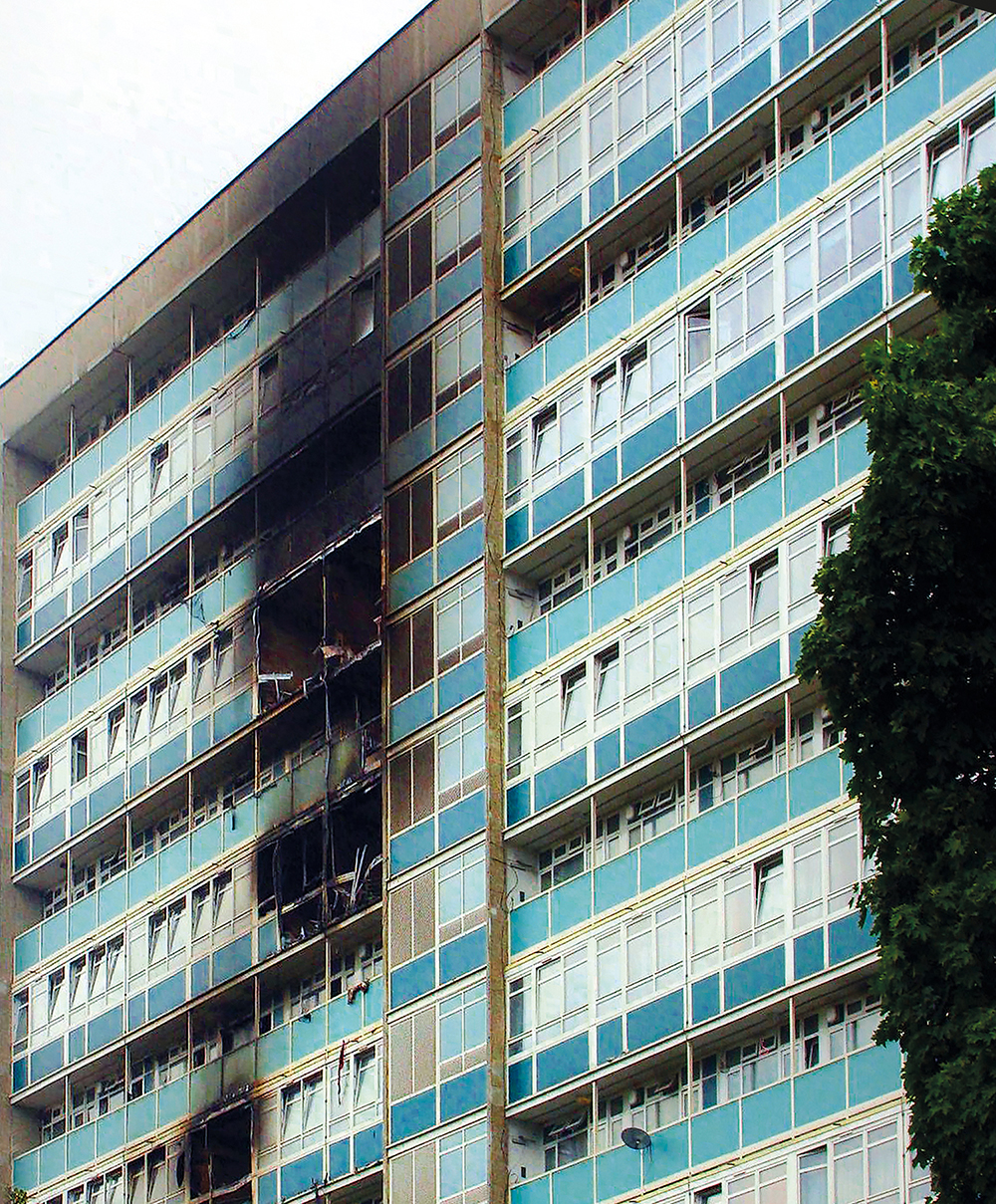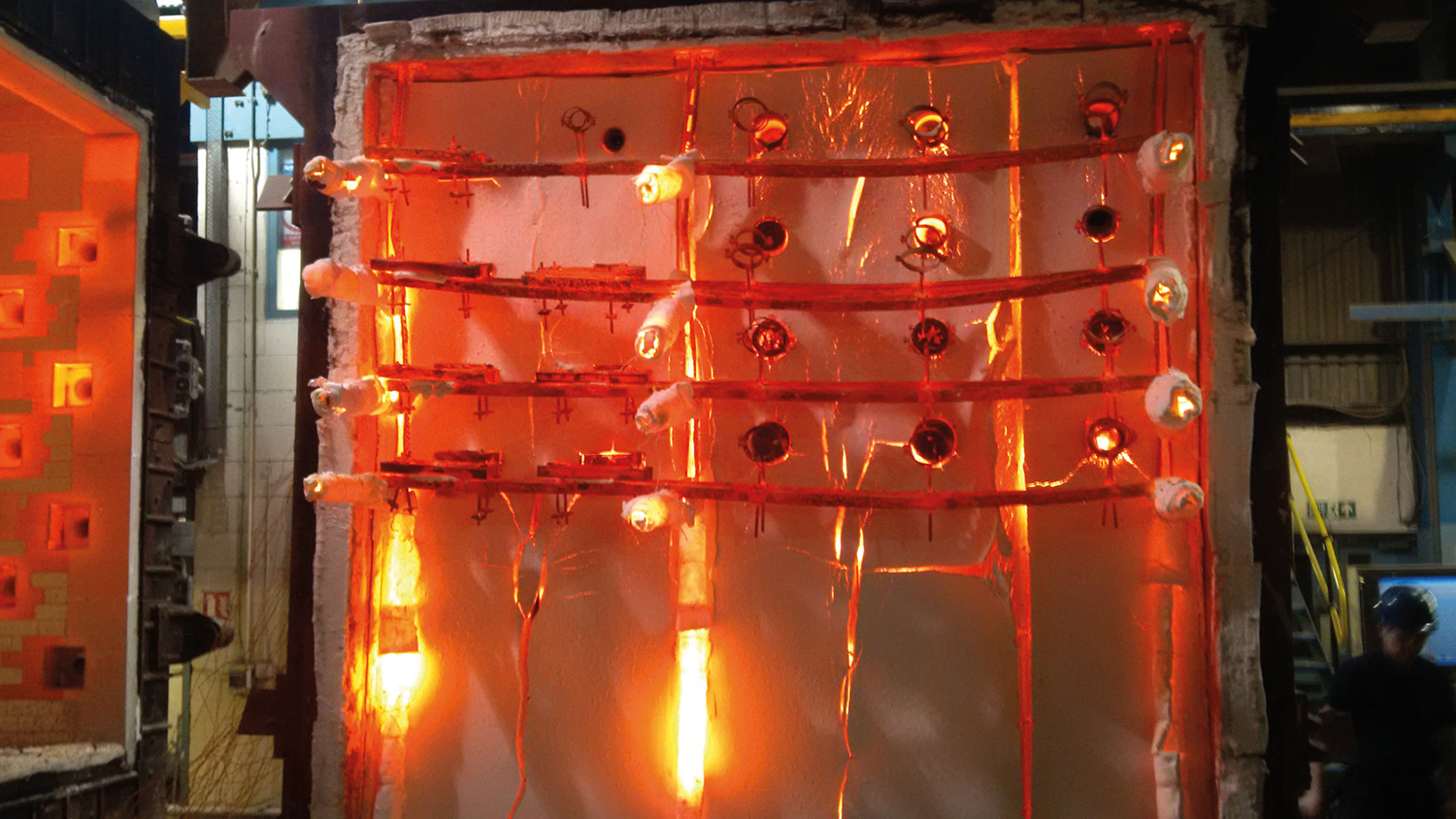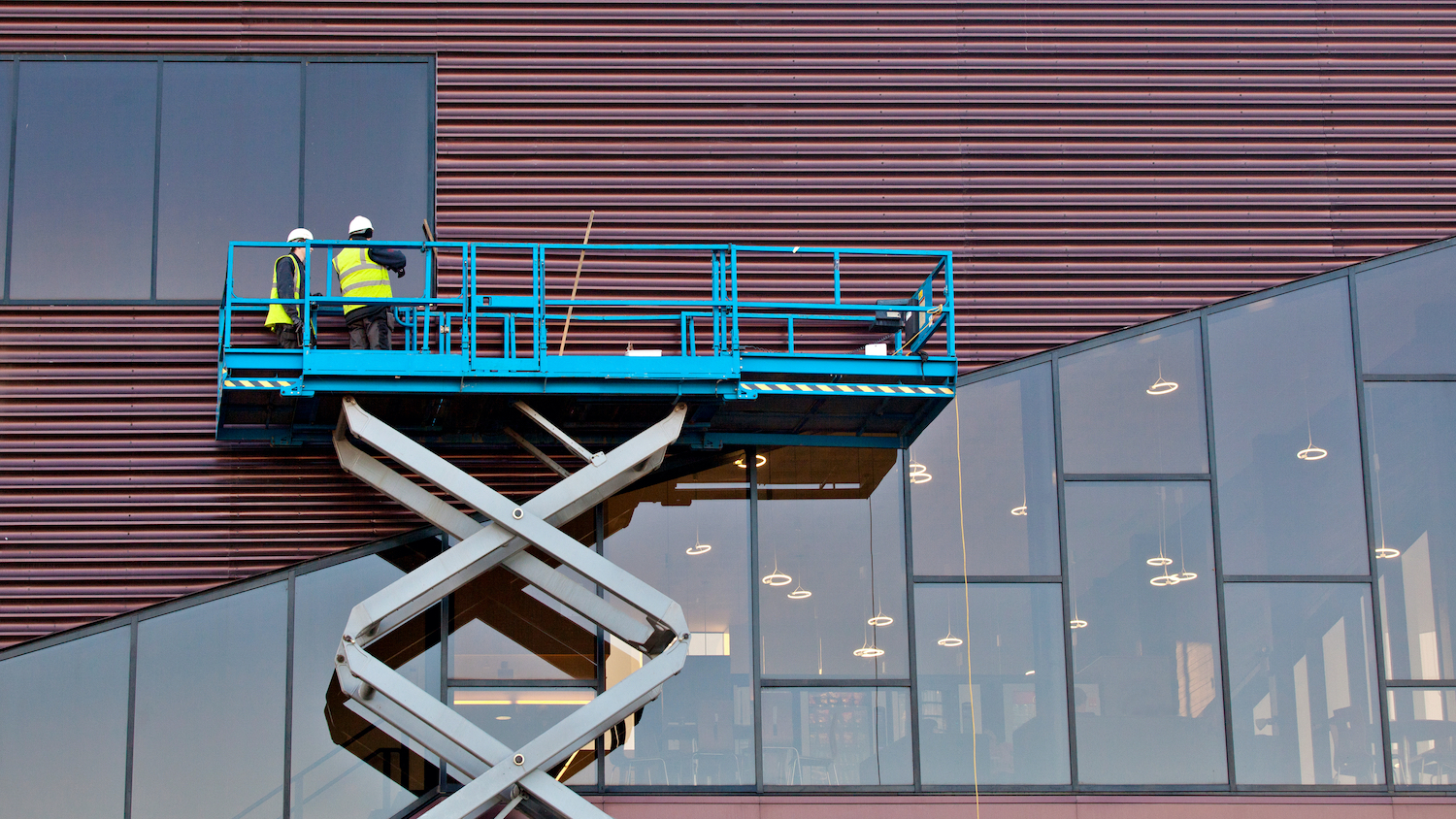
In this CPD, Craig Wells explains the role passive fire protection plays in buildings, with a specific focus on service penetrations.
What you will learn in this CPD
>Legislation and fire test standards for service penetrations
> Key considerations for design and installation
> The importance of early engagement and test evidence
Passive fire protection is a key element of a building’s fire strategy, covering areas like intumescent fireproofing, linear gaps and cavity barriers, compartmentation, fire doors and service penetration sealing.
These work alongside active measures, such as fire alarms, extinguishers and sprinklers, to protect people and property from the threat of fire. However, while active systems are visible and ready to use, passive fire elements are often hidden within the walls and floors of a building – but are just as important.
We all walk through fire doors and past fire-rated walls without noticing, yet these are what keep a fire contained to its area of origin.
Breaches in compartmentation are typically caused by mechanical, electrical or plumbing (MEP) services, and can pose a significant risk when not sealed properly with the correct products.
Intumescent basics
Most service penetration sealing products contain an intumescent material. This is a graphite-based material that expands when exposed to heat and seals the opening left behind by the melting service.
This reaction forms a carbonaceous char that prevents the spread of fire and smoke to other areas, commonly known as fire compartmentation.
What does the legislation say?
Firestopping is a legal requirement enforced by building regulations and other industry documents and legislation, such as Approved Document B and the Building Safety Act 2022. Building regulation requirements can be found in Approved Document B, which provides guidance on how to meet the regulations.
Requirement B3 focuses on internal fire spread (structure) and states: “The building shall be designed and constructed so that, in the event of a fire, its stability will be maintained for a reasonable period.”
Product example: fire collar

Furthermore, it adds that: “Every joint, imperfect fit and opening for services through a fire-separating element should be sealed with firestopping to ensure the fire resistance of the element is not impaired. Firestopping delays the spread of fire and, generally, the spread of smoke as well.”
The Building Safety Act, as a result of the Grenfell Tower tragedy, reinforces that everyone, not just decision-makers, must follow fire safety regulations and work compliantly.
BS EN 1366-3 fire testing standards
Fires do happen, and that’s why fire testing is crucial to ensure products and systems work as intended.
Service penetrations are tested to BS EN 1366-3, where the system is installed into a replica wall or floor, and then craned onto a furnace, ready to be exposed to fire conditions.
BS EN 1366-3 fire testing is designed to replicate a flashover fire. With actual furnace temperatures capable of exceeding 500°C within five minutes, this method is extremely onerous and aggressive.
Once the test is complete, the UKAS-accredited laboratory will issue a test report. This report presents straightforward observations and includes technical details.
At the second stage, the classification report and European Technical Assessment (ETA) will be created, again, by a third-party UKAS-accredited laboratory. This will define multiple test reports to outline the scope, upper and lower limits, and specifications.
The classification report and ETA are the most useful documents because they show the overall tested scope of application instead of focusing on individual specimens.
Finally, the third stage is achieving CE marking, which after Brexit was replaced by UKCA in Great Britain, although the former is still accepted. This requires conducting regular factory audits to verify product quality and confirm that the product performs consistently with the original test specimen.

Lakanal House fire
In 2009, a fire broke out at Lakanal House, a 14-storey residential block in south London. Six people lost their lives, including three children.
The cause of the fire was an electrical fault in a television, which quickly spread through the building.
An investigation into the fire revealed a failure in the building’s compartmentalisation, which allowed the fire and smoke to spread between flats and floors.
Lakanal House is one of many tragedies that raised fire safety concerns in high-rise buildings. It showed why firestopping needs to be taken seriously and emphasised that every detail matters when it comes to fire safety.
Image: Peter Gasston
Common design and installation challenges
Historically, the construction industry has lacked coordination and communication between various trades and elements of the design team.
When projects focus heavily on the installation phase, the crucial role of thorough design, backed by coordination and communication, is often overlooked.
And when these elements are missing, onsite problems such as oversized holes or incompatible substrates can occur, resulting in delays and additional costs.
For example, using a standard drill bit to create a 132mm hole for a 110mm pipe seems straightforward: install a wrap around the pipe, push it flush with the concrete, backfill and finish.
But oversized holes can complicate the process, requiring additional coordination and tested solutions, such as adding a temporary shutter to wrap and compound.
If the oversized hole isn’t properly shuttered and backfilled, the intumescent wrap could fall out or expand into any gaps in the backfill, instead of sealing the gap in the compartment line created as the pipe melts.
‘Pink foam’ misuse
There are widespread misconceptions in the industry about fire-rated PU foam, due to a poor understanding of its use and suitability.
While it can sometimes be used to effectively seal small linear gaps, for instance, pink foam has a limited tested scope of application.
Its material makeup means that it can shrink away from the substrate as it burns, creating unsealed gaps through which fire and smoke can spread. Therefore, at Quelfire, we strongly advise against using it to firestop service penetrations.
An ‘up to’ fire rating refers to the maximum time the product has ever achieved in a fire test, and it may have only achieved that specific fire rating in one application.
That may mean that in another application, it needs to be used in a system with other firestopping products to achieve the ‘up to’ rating.
That’s why it’s imperative to understand, choose and install the correct products following the tested scope of application, as these products are the only barrier between the fire and non-fire side. They save lives.
Complexities of services and substrates
When it comes to firestopping, not all services and substrates behave in the same way. This can consequently affect product selection and installation.
Different materials react differently in fire: For example, uPVC and HDPE melt and burn in different ways, which impacts the type of firestop product needed and the fire rating that the product/system achieves.

Substrate matters: A flexible plasterboard wall behaves very differently from a rigid concrete floor. The firestop solution must be compatible with the specific wall or floor type it’s being installed into.
Spacing guidelines: The tested scope of application defines the minimum distance that is permitted between each service seal. In reality, there is often a tendency to pack as many services as possible into a small opening.
The importance of early engagement
There will always be challenges that arise on site – that’s just the nature of construction. But the complexity of the challenge will be reduced when an early engagement approach is implemented in the project.
Early engagement ensures that a suitably tested firestop solution is chosen to match the service type, substrate, fire rating and installation environment. It also ensures the correct sizing of holes, product selection and adherence to building regulations.
It brings all relevant stakeholders together to discuss key objectives and coordinate the project based on the available test evidence.
The guide Firestopping of Service Penetrations: Best Practices in Design and Installation, published by the ASFP, BESA, BSRIA, FIS and GPDA, has nine golden rules.
Seven of these relate to the building’s design, clearly highlighting where the emphasis needs to be. Ultimately, an accurate design makes a compliant installation much easier to achieve.
The beauty of the ‘design then build’ model is that fully tested solutions are integrated early, allowing for the correct products to be installed in a compliant manner.
As a result, fire will be contained to its compartment of origin for the specified period of time it has been fire tested.
This removes the pressure of retrofitting firestopping solutions post-installation, reducing rework and compromise later in the project. Most importantly, it protects the end user and gives you peace of mind.
Responsibilities in firestopping
Construction is a collaborative effort, yet we often see responsibility passed around, with no party wanting to accept it wholly. However, the truth is that we all share responsibility for the roles we play in projects, no matter how big or small.
Designers are responsible for including compliant solutions from the early stages of design, while firestop contractors must make sure the solutions are installed as tested.
Useful resources
Approved Document B: Fire safety: Approved Document B – GOV.UK
Building Safety Act 2022: Building Safety Act 2022
Fire Safety (England) Regulations 2022: Fire Safety (England) Regulations 2022 – GOV.UK
BS EN 1366-3: BS EN 1366-3:2021 – TC | 31 Jan 2022 | BSI Knowledge
Each trade must understand its impact on the next, and how its work may affect the installation of the firestopping.
Then you have the manufacturers, which have the responsibility to provide accurate test evidence, training and support.
Service penetration sealing is far too important to be an afterthought. Everyone has a part to play in ensuring compliance.
However, with an early engagement approach, tested products and collaboration, the protection of people and property is achievable.
Craig Wells is sales director at Quelfire.





